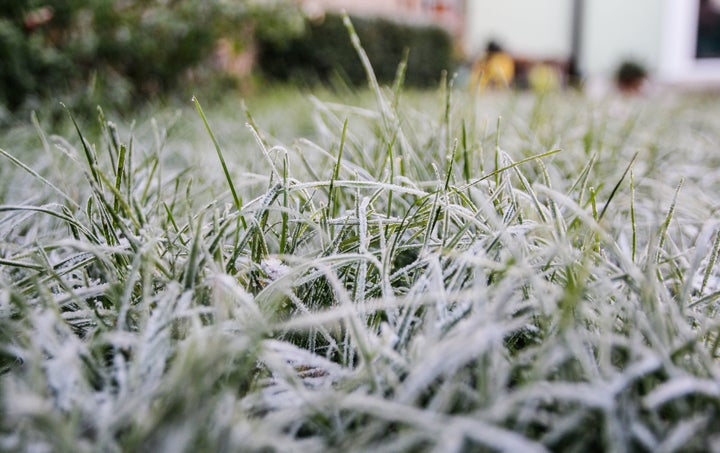
For what’s meant to be a relaxing hobby, gardening sure does have a lot of stressors.
Whether it’s seasonal pests, cold weather-averse plants, or even just British weather, it feels like the work of a gardener is never done.
And while the barren winter might feel like a pretty grim time to care for it, getting your garden ready for the colder months is better done sooner, rather than later. That’s because your garden’s soil, and all the plants on it, can become too cold to work with.
So, we thought we’d create a checklist ― with the help of some experts ― explaining what to do before the cold weather properly sets in...
1) Got clay soil? Try raking it now
Heavy, sodden clay soil is notoriously hard to grow in. But raking it now, while the ground is still soft, can help upcoming frosts to loosen the soil. “Digging now allows the frost to break up the soil over the winter, improving the structure,” shared Countryfile. “As long as your beds aren’t seriously compacted there is no need to double dig.”
If you have sandier soil, though, the experts recommend you wait until spring to dig flower beds as they’re more prone to moisture loss.
2) Feed your garden friends
Whether it’s hanging bird-friendly suet balls in a squirrel-safe cage, leaving a bit of meat-based cat or dog food out for hedgehogs, or just leaving some water out for all of them, it’s a good time to consider paying your pollinators and borrowers back.
You can even provide habitats and food via sweet inaction; leaving a pile of leaves in your garden rather than throwing them away can provide valuable shelter, warmth, and insects for hungry critters, while leaving late-blooming ivy untrimmed can nourish bugs and birds alike.
3) Mow your leaves
Speaking of fallen leaves, you might want to consider mowing your leaves to shred them in order to create valuable leaf mould compost. Even if you don’t have the necessary two years to wait to make what the Royal Horticultural Society calls “black gold,” gardening pro Monty Don says that you can have soil-friendly leaf mulch ready in a matter of months.
All you’ll need is some leaves, a place to put them, and a container, such as a leaf bay or a black bag with holes in it.
4) Last thing on leaves ― net your pond
Nothing really complicated to say here ― netting your pond protects it from falling leaves, which can deoxygenate your water as they rot.
5) Get pruning
Though there are some exceptions, Countryfile advises we “dead-head autumn-flowering plants and prune summer-flowering shrubs before the first frosts.” This is a way to conserve their energy over the winter, prevent “woody” growth in the spring, and generally make your garden look neater.
6) Shelter and protect your plants
If all these recent storms have taught us anything, it’s that your plants can never be too secure. Secure climbing plants carefully, and cover or move cold-sensitive plants indoors now.
7) Cover your cabbages
Aside from keeping them safe from pigeons and other birds, this step can help to keep whitefly and other pests at bay too. Use a fine mesh netting or horticultural fleece to tuck those bad boys in this winter for a tasty spring harvest.
If you have an allotment or veggie patch that isn’t being used over winter, you might want to cover that over winter too and place bricks down to ensure the cover doesn’t move. This will prevent weeds from coming up over winter, protect the exposed soil’s nutrients and moisture during harsh weather, as well as encouraging faster warming in spring.
8) Get your garlic in the ground
Huw Richards shared in a YouTube video that he prefers to plant his garlic before Christmas in the UK, as bulbs planted in early spring tend not to do as well.
9) Refuse to admit tomato defeat
The bad news is your tomatoes aren’t going to grow any bigger from your ground this year. The good news? You can still try to ripen them by hanging them upside down in a warm, dry place (ideally a greenhouse), or you can turn them into a tasty chutney.
Look, I wish there was less sowing and more reaping too ― but it’ll be worth it for a low-hassle winter garden too, right?